Use the sun’s energy (the ultimate source of energy) to heat up a tasty treat with this simple solar oven!
Have you ever heard the expression that it’s so hot out you could fry an egg on the sidewalk? Have you ever wondered if it’s true?
Find out with this easy, fun, and delicious solar oven science project that uses only household items and a pizza box. Plus, learn about absorption, insulation, and the sun’s energy.
Want even more solar energy science? Check out these solar energy science projects. And for another edible science project that teaches about insulation, make Baked Alaska.
What You Need:
- Cardboard pizza box (the kind delivered pizza comes in)
- Box knife or scissors
- Aluminum foil
- Clear tape
- Plastic wrap (a heavy-duty or freezer zip lock bag will also work)
- Black construction paper
- Newspapers
- Ruler, or wooden spoon
- Thermometer
- An adult to help with cutting
Download our Solar Oven Recipes to get ideas for what to make with your solar oven.
What You Do:
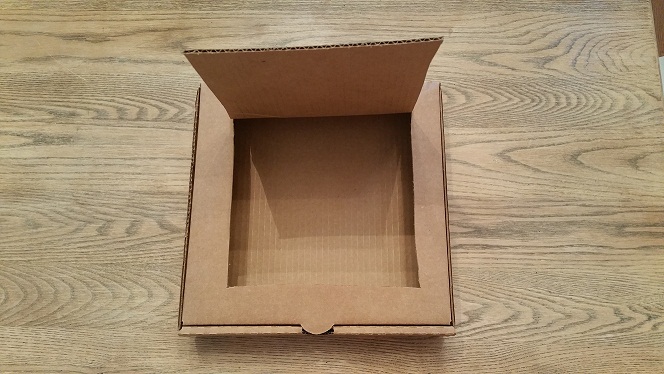
1. Use a box knife or sharp scissors to cut a flap in the lid of the pizza box. Cut along three sides, leaving about an inch between the sides of the flap and the edges of the lid. Fold this flap out so that it stands up when the box lid is closed.
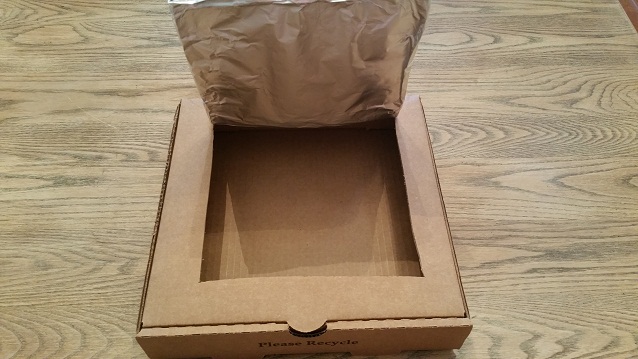
2. Cover the inner side of the flap with aluminum foil so that it will reflect rays from the sun. To do this, tightly wrap foil around the flap, then tape it to the back, or outer side of the flap.
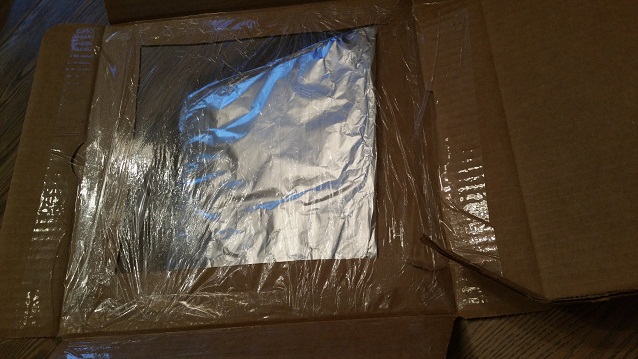
3. Use clear plastic wrap to create an airtight window for sunlight to enter into the box. Do this by opening the box and taping a double layer of plastic wrap over the opening you made when you cut the flap in the lid. Leave about an inch of plastic overlap around the sides and tape each side down securely, sealing out air. If you use a plastic bag, cut out a square big enough to cover the opening, and tape one layer over the opening.
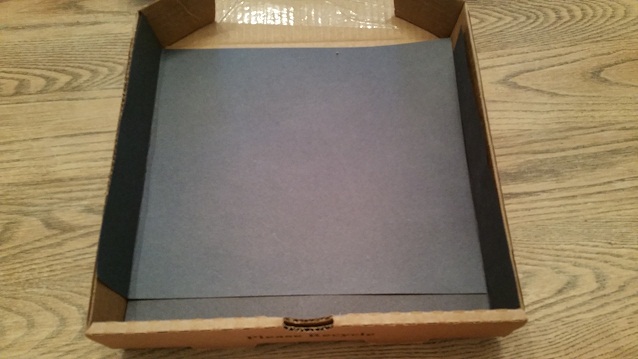
4. Line the bottom of the box with black construction paper—black absorbs heat. The black surface is where your food will be set to cook. How much you need will depend on the size of the pizza box you’re using to make your solar oven.
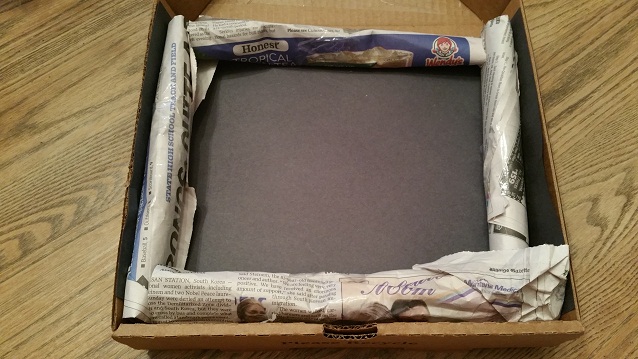
5. To insulate your oven so it holds in more heat, roll up sheets of newspaper and place them on the bottom of the box. Tape them down so that they form a border around the cooking area. It may be helpful to also tape the rolls closed first. The newspaper rolls should make it so that the lid can still close, but there is a seal inside of the box, so air cannot escape.
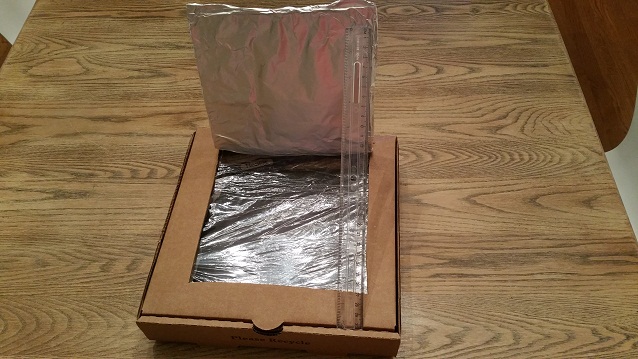
6. The best hours to set up your solar oven are when the sun is high overhead—from 11 am to 3 pm. Take it outside to a sunny spot and adjust the flap until the most sunlight possible is reflecting off the aluminum foil and onto the plastic-covered window. Use a ruler to prop the flap at the right angle. You may want to angle the entire box by using a rolled up

7. You can make toast by buttering a slice of bread then letting the sun do the rest. Cooking a hot dog or making nachos with chips and cheese are also fun treats to make in your solar oven! It would also work great to heat up leftovers. So the paper at the bottom doesn’t get dirty, put what you would like to cook on a clear plastic or glass plate. A pie plate would work well. Place the thermometer inside your oven before you close it, so you can check the temperature.
8. To take food out of the oven, open up the lid of the pizza box, and using oven mitts or potholders, lift the glass dish out of the oven.
What Happened:
The heat from the sun is trapped inside of your pizza box solar oven, and it starts getting very hot.
Ovens like this one are called collector boxes, because they collect the sunlight inside. As it sits out in the sun, your oven eventually heats up enough to melt cheese, or cook a hot dog!
How does it happen? Rays of light are coming to the earth at an angle. The foil reflects the ray, and bounces it directly into the opening of the box.
Once it has gone through the plastic wrap, it heats up the air that is trapped inside. The black paper absorbs the heat at the bottom of the oven, and the newspaper make sure that the heat stays where it is, instead of escaping out the sides of the oven.
Your solar oven can reach about 200° F on a sunny day and will take longer to heat things than a conventional oven.
Although this method will take longer, it is very easy to use, and it is safe to leave alone while the energy from the sun cooks your food.
We made a cheese roll up by melting cheese on a corn tortilla. It took about 45 minutes for our cheese to melt and the tortilla to become soft. The internal temperature of our pizza box solar oven was 125° F.
If you do not want to wait long to have a solar-cooked dish, try heating up something that has already been cooked, like leftovers, or a can of soup.
Putting solid food in a glass dish and liquids in a heavy plastic zip lock bag works well. You can also pre-heat your oven by setting it in direct sun for up to an hour.
Other recipes you may want to try are making baked potatoes, rice with vegetables, chocolate fondue, s’mores, and roasted apples with cinnamon and sugar. Even on partly cloudy days there may be enough heat and light from the sun to slow cook a special dish. Here are a few tips for having success with your solar oven:
- Stir liquids (if you’re cooking something like fondue, rice, or soup) every 10 minutes. You can rotate solid food every 10-15 minutes as well, so it cooks evenly.
- Reposition your solar oven when needed, so that it faces direct sunlight. You should be checking periodically on your oven, to make sure it is in the sun.
- Make sure that the foil-covered flap is reflecting light into the pizza box, through the plastic-covered window.
To experiment further with solar coooking, make your own solar purifier with this science project!
For more ready-to-go science projects, see Solar & Alternative Energy Kits.





